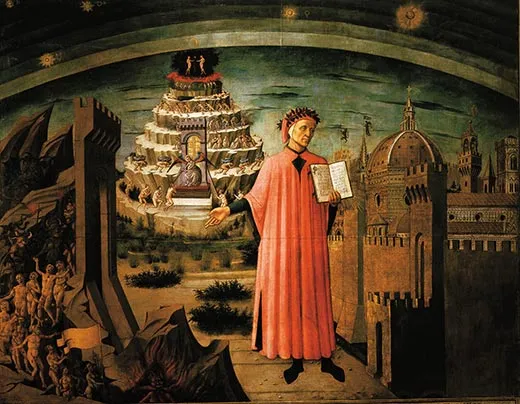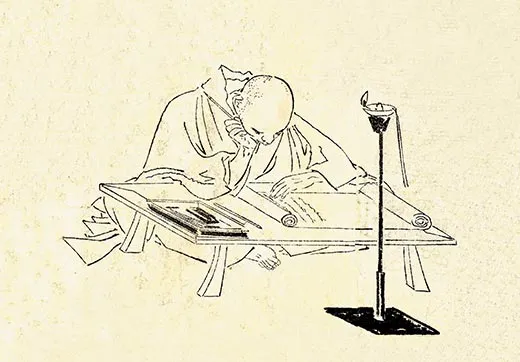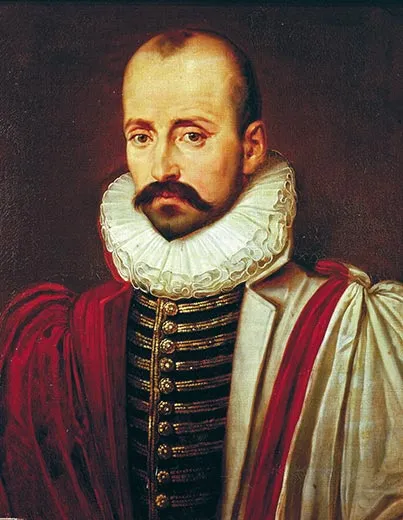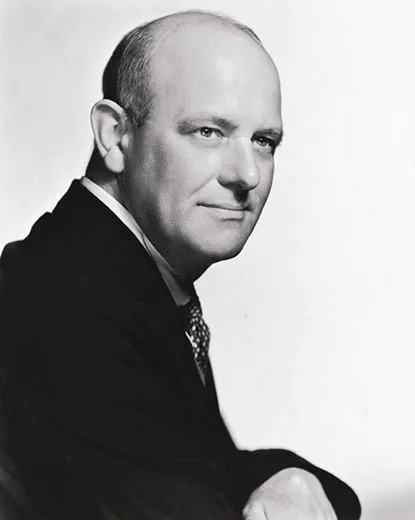The Timeless Wisdom of Kenko
A 14th-century Japanese essayist’s advice for troubled times runs the gamut from quirky to prescient
Around the year 1330, a poet and Buddhist monk named Kenko wrote Essays in Idleness (Tsurezuregusa)—an eccentric, sedate and gemlike assemblage of his thoughts on life, death, weather, manners, aesthetics, nature, drinking, conversational bores, sex, house design, the beauties of understatement and imperfection.
For a monk, Kenko was remarkably worldly; for a former imperial courtier, he was unusually spiritual. He was a fatalist and a crank. He articulated the Japanese aesthetic of beauty as something inherently impermanent—an aesthetic that acquires almost unbearable pertinence at moments when an earthquake and tsunami may shatter existing arrangements.
Kenko yearned for a golden age, a Japanese Camelot, when all was becoming and graceful. He worried that “nobody is left who knows the proper manner for hanging a quiver before the house of a man in disgrace with his majesty.” He even regretted that no one remembered the correct shape of a torture rack or the appropriate way to attach a prisoner to it. He said deliberate cruelty is the worst of human offenses. He believed that “the art of governing a country is founded on thrift.”
One or two of his essays are purely informational (not to say weird). One of my favorites is essay 49, which reads in its entirety: “You should never put the new antlers of a deer to your nose and smell them. They have little insects that crawl into the nose and devour the brain.”
A sailor in rough seas may grip the rail and fix his eye on a distant object in order to steady himself and avoid seasickness. I read Kenko’s essays for a similar reason.
Kenko lived on a different planet—planet Earth in the 14th century. But if you proceed on the vertical from the 14th century to the 21st, you become aware of a time-flex in which his intimations of degeneracy and decline resonate with our own. A kind of sonar: from Kenko our own thoughts bounce back across time with an alienated charm and a laugh of recognition.
Kenko had been a poet and courtier in Kyoto in the court of the emperor Go-Daigo. It was a time of turbulent change. Go-Daigo would be ousted and driven into exile by the regime of the Ashikaga shoguns. Kenko withdrew to a cottage, where he lived and composed the 243 essays of the Tsurezuregusa. It was believed that he brushed his thoughts on scraps of paper and pasted them to the cottage walls, and that after his death his friend the poet and general Imagawa Ryoshun removed the scraps and arranged them into the order in which they have passed into Japanese literature. (The wallpaper story was later questioned, but in any case, the essays survived.)
Kenko was a contemporary of Dante, another sometime public man and courtier who lived in exile in unstable times. Their minds, in ways, were worlds apart. The Divine Comedy contemplated the eternal; the Essays in Idleness meditated upon the evanescent. Dante wrote with beauty and limpidity and terrifying magnificence, Kenko with offhand charm. They talked about the end of the world in opposite terms: the Italian poet set himself up, part of the time, anyway, as the bureaucrat of suffering, codifying sins and devising terrible punishments. Kenko, despite his lament for the old-fashioned rack, wrote mostly about solecisms and gaucheries, and it was the Buddhist law of uncertainty that presided over his universe. The Divine Comedy is one of the monuments of world literature. The Essays in Idleness are lapidary, brief and not much known outside Japan.
Kenko wrote: “They speak of the degenerate, final phase of the world, yet how splendid is the ancient atmosphere, uncontaminated by the world, that still prevails within the palace walls.” As Kenko’s translator Donald Keene observed, there flows through the essays “the conviction that the world is steadily growing worse.” It is perversely comforting to reflect that people have been anticipating the end of the world for so many centuries. Such persistent pessimism almost gives one hope.
There is consolation in knowing, too, that Kenko was a sailor at the rail, fixing his eye across the water: “The pleasantest of all diversions is to sit alone under the lamp, a book spread out before you, and to make friends with people of a distant past you have never known.” Kenko is like a friend who reappears, after a long separation, and resumes your talk as if he had left the room for just a moment.
Kenko is charming, off-kilter, never gloomy. He is almost too intelligent to be gloomy, or in any case, too much a Buddhist. He writes in one of the essays: “A certain man once said, ‘Surely nothing is so delightful as the moon,’ but another man rejoined, ‘The dew moves me even more.’ How amusing that they should have argued the point.”
He cherished the precarious: “The most precious thing in life is its uncertainty.” He proposed a civilized aesthetic: “Leaving something incomplete makes it interesting and gives one the feeling that there is room for growth.” Perfection is banal. Better asymmetry and irregularity.
He stressed the importance of beginnings and endings, rather than mere vulgar fullness or success: “Are we to look at cherry blossoms only in full bloom, the moon only when it is cloudless? To long for the moon while looking on the rain, to lower the blinds and be unaware of the passing of the spring—these are even more deeply moving. Branches about to blossom or gardens strewn with faded flowers are worthier of our admiration.”
At a time when flowers have been wilting, when assets dwindle and mere vulgar fullness may suggest something as unpromising as a portfolio managed by Bernard Madoff, the eye might appreciate a moon obscured by clouds.
Of houses, Kenko says: “A man’s character, as a rule, may be known from the place where he lives.” For example: “A house which multitudes of workmen have polished with every care, where strange and rare Chinese and Japanese furnishings are displayed, and even grasses and trees of the garden have been trained unnaturally, is ugly to look at and most depressing. A house should look lived in, unassuming.” So much for the McMansion.
In a time of traumatic change, some writers or artists or composers may withdraw from the world in order to compose their own universe—Prospero’s island.
That is how Montaigne, in the midst of France’s 16th-century Catholic-Protestant wars, came to write his Essaies, which changed literature. After an estimable career as courtier under Charles IX, as member of the Bordeaux parliament, as a moderating friend of both Henry III and Henry of Navarre during the bloody wars of religion, Montaigne withdrew to the round tower on his family estate in Bordeaux. He announced: “In the year of Christ 1571, at the age of thirty-eight, on the last day of February, his birthday, Michel de Montaigne, long weary of the servitude of the court and of public employments, while still entire, retired to the bosom of the learned virgins, where in calm and freedom from all cares he will spend what little remains of his life, now more than half run out.... he has consecrated [this sweet ancestral retreat] to his freedom, tranquility and leisure.”
The wood over his doorway was inscribed to read, “Que sais-je?”—“What do I know?”—the pre-eminent question of the Renaissance and Enlightenment. So, surrounded by his library of 1,500 books, he began to write.
Montaigne followed a method of composition much like Kenko’s. In Japanese it is called zuihitsu, or “follow the brush”—that is, jot down the thoughts as they come to you. This may produce admirable results, if you are Kenko or Montaigne.
I find both to be stabilizing presences. A person’s sense of balance depends upon the inner ear; it is to the inner ear that such writers speak. Sometimes I get the effect by taking a dip in the Bertie Wooster stories of P. G. Wodehouse, who wrote such wonderful sentences as this description of a solemn young clergyman: “He had the face of a sheep with a secret sorrow.” Wodehouse, too, would eventually live in exile (both geographical and psychological), in a cottage on Long Island, remote from his native England. He composed a Bertie Wooster Neverland—the Oz of the twit. The Wizard, more or less, was the butler Jeeves.
Wodehouse, Kenko, Dante and Montaigne make an improbable quartet, hilariously diverse. They come as friendly aliens to comfort the inner ear, and to relieve one’s sense, which is strong these days, of being isolated on an earth that itself seems increasingly alien, confusing and unfriendly.
It is a form of vanity to imagine you are living in the worst of times—there have always been worse. In bad times and heavy seas, the natural fear is that things will get worse, and never better. It’s a jolt to a Western, instinctively progressive mind, trained to think of history as ascendant—like the stock market, like housing prices—to find trends running in the other direction.
Still, I remember once going to Kyoto, the scene of Kenko’s exile, and after that I took the bullet train to Hiroshima. The memorial park was there, and the memorial museum with its terrible record of what happened in August 1945—hell itself—and there was the charred skeleton of the dome of the city’s prefecture, preserved as a reminder. But otherwise...a bustling, prospering city, with a thousand neon signs flashing familiar corporate logos. And when you crossed a busy intersection, the “Walk” signal played a tinkling little Japanese version of “Comin’ Through the Rye.”
Those who say the world has gone to hell may be right. It is also true that hell, contra Dante, may be temporary.
Dante, Kenko and Montaigne all wrote as men exiled from power—from the presence of power. But power, too, is only temporary.
Every moment readjusts the coordinates of hope and despair—some of the readjustments are more violent than others. We live now in a validation of Bertrand Russell’s model of “spots and jumps.” In 1931, the philosopher wrote: “I think the universe is all spots and jumps, without unity, without continuity, without coherence or orderliness or any of the other properties that governesses love...it consists of events, short, small and haphazard. Order, unity and continuity are human inventions, just as truly as are catalogues and encyclopedias.”
Kenko in one essay wrote: “Nothing leads a man astray so easily as sexual desire. The holy man of Kume lost his magic powers after noticing the whiteness of the legs of a girl who was washing clothes. This is quite understandable, considering that the glowing plumpness of her arms, legs and flesh owed nothing to artifice.”
That, too, sends a strange little echo back to our time. The magic power the holy man lost was his ability to fly. Our world regained the magic, and it gave us Charles Lindbergh, Hiroshima, global travel, 9/11 and the Nigerian terrorist who, coming into Detroit one Christmas Day, set his underpants on fire.
We are surrounded by magic, some good, some evil and some both at once—an excess of magic, a confusion of it. Solitary Kenko brushed his cranky, acerbic thoughts onto scraps of paper that survived through the centuries only by luck; they might just as well have rotted on the walls or gone out with the trash. But look at our magic now: you can Google Kenko, and if you have a Kindle or Nook or iPad or some other e-reader, you can reassemble all of Kenko or Dante or Montaigne electronically upon a thin, flat screen—from which it may also vanish at a touch, in a nanosecond.
A trompe l’oeil universe: creation and un-creation—poof! Precious writers are miraculously diffused through the Web, you fetch them out of the air itself. And they may disappear more quickly than Kenko’s vanishing blossoms or shrouded moons. The universe is not a solid thing.
Writing is—we have always thought—a solitary and even covert labor. Of course a great writer need not be a hermit. (Shakespeare was not.) I have wondered whether Montaigne or Kenko or (God help us) Dante would have been on Facebook or Twitter, gabbing and texting away in the gregarious solidarities of new social forms. Are there such things as exile or retreat or solitude in the universe of Skype, the global hive? Does the new networking improve the quality of thinking and writing? It undoubtedly changes the process—but how, and how much? We don’t know yet.
Sometimes, oddly enough, it’s easier to write in a noisy room than in silence and solitude; for a time I liked to write while riding up and down Manhattan on the Lexington Avenue IRT—the rattling of the cars and screeching of the rails improved my concentration, and I liked having company as I scribbled away. I was fascinated and strangely soothed by the protocol of the subway, which requires that the faces of all those diverse riders—Asians, Africans, Latinos, Europeans—should, for the duration of the ride, be impassive and unreadable: no eye contact, perfect masks.
Lance Morrow’s books include the essay collection Second Drafts of History.



